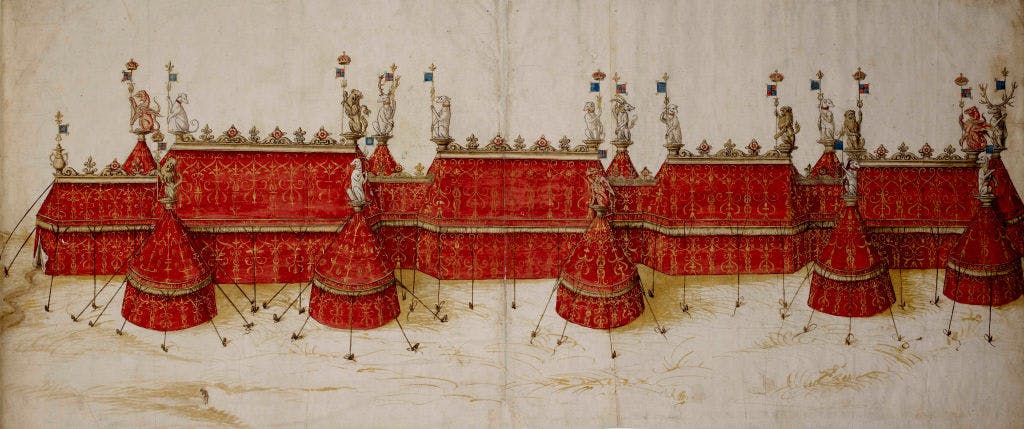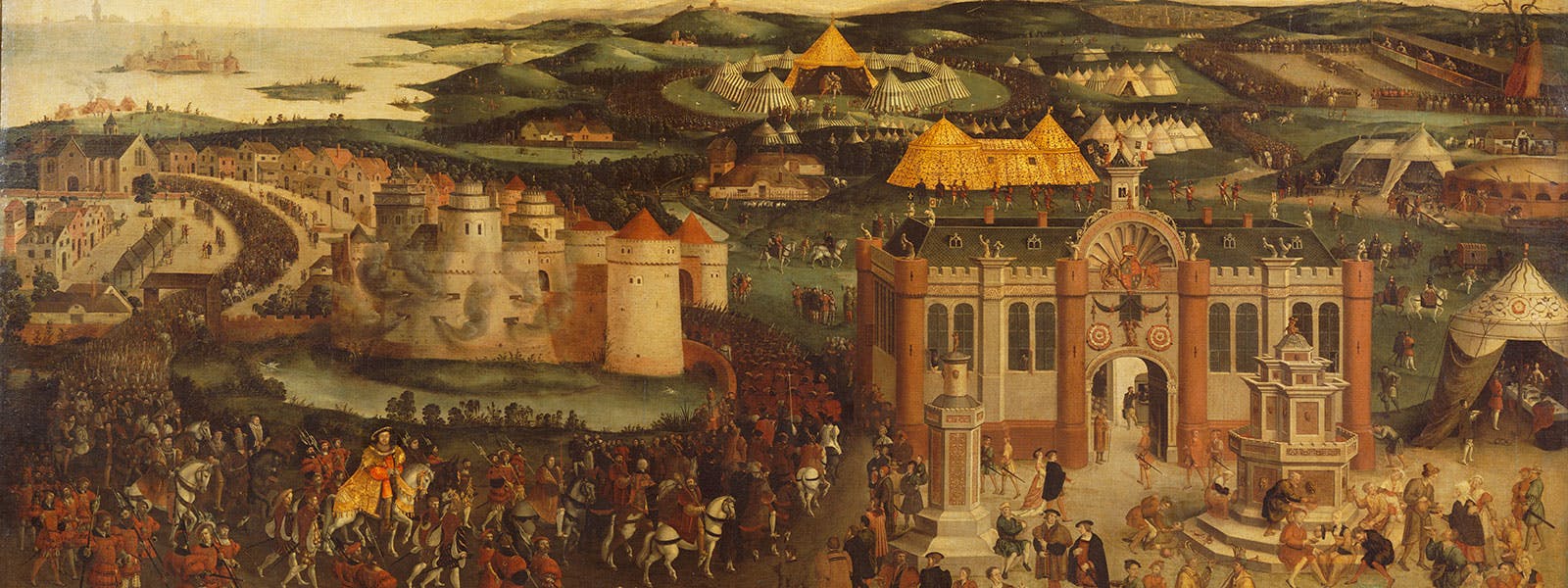
Henry VIII's historic meeting with his great rival François I was a defining point in his reign
At 6pm on 7 June 1520, Henry VIII of England met François I of France near Calais, for an astonishingly grand European festival, designed to improve relations between the two great rival kingdoms. So magnificent was the occasion that it became known as the Field of Cloth of Gold.
To celebrate their newfound friendship — orchestrated by Henry's right-hand man, Cardinal Thomas Wolsey — Henry and François had agreed to meet and now, in a shallow valley a little to the south of Calais in northern France, the two kings embraced warmly.
The momentous moment marked the start of 18 days of feasts, tournaments, masquerades and religious services set amidst a sea of specially built — and incredibly elaborate — tents, banqueting houses and 'portable palaces'.
Top image: The Field of the Cloth of Gold c.1545. Royal Collection Trust / © Her Majesty Queen Elizabeth II 2019.
An old rivalry
In 1520 Henry VIII and François I were both young and at the height of their powers. Henry was 28 years old whilst François was 25. They were both athletic, cultured and ruthlessly ambitious.
Each king had a begrudging admiration for the other, but they were natural rivals.
The conflict between Henry, François and their counterpart, the Holy Roman Emperor Maximilian I — who ruled a vast area of central Europe that stretched from modern-day northern Italy to Denmark and across France and Germany to Poland — led to a volatile cocktail of power struggles that came to a head in the years leading up to the Field of Cloth of Gold.
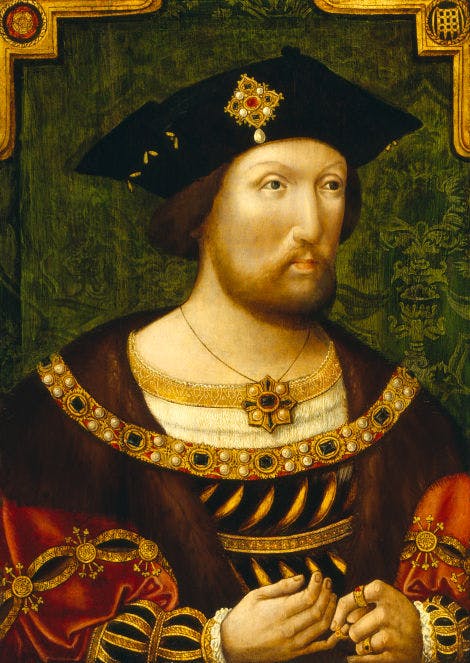
Henry VIII, King of France?
Since the early 14th century, English kings had claimed the French throne and had fought wars to take it. Henry VIII styled himself as a great military leader and idolised his predecessor Henry V, the victor of the Battle of Agincourt.
In 1513, Henry attempted to recreate the glories of his idol by invading France. François, who was heir to the French throne at the time, fought against Henry and his army.
Henry gained the support of the Emperor Maximilian I during his campaign and gained a modest victory at the Battle of the Spurs, but his glories were not to last.
Image: King Henry VIII by an unknown Anglo-Netherlandish artist, c.1520. © National Portrait Gallery

King François I of France
By 1515, François had come to the throne as King of France and established himself as a great warrior at the Battle of Marignano. The peace treaty that followed — to which the Emperor Maximilian I was a signatory — sidelined Henry VIII, leaving him isolated and humiliated.
In Henry's eyes, François was an upstart who had inherited a country that was wealthier than his own, and a throne that Henry believed was rightfully his.
Image: Francois I c.1515-20. © Bridgeman Images

Calls for peace
Against the background of war, humanists such as Erasmus, Thomas More and Guillaume Budé began to argue that kings should seek peace as a route to glory.
In 1518 these efforts were finally successful. Representatives from across Europe came to London to sign a treaty of Universal Peace (sometimes referred to as the Treaty of London).
The treaty of Universal Peace was the brainchild of Cardinal Thomas Wolsey, Henry VIII’s chief advisor. By securing the peace treaty in London, Wolsey had placed Henry at the front and centre of European politics.
Central to the treaty of Universal Peace was an agreement that Henry and François should meet to affirm their alliance and their commitment to peace. Wolsey began making the preparations for their meeting immediately, but politics elsewhere in Europe got in the way.
Image: Cardinal Thomas Wolsey. © National Portrait Gallery, London
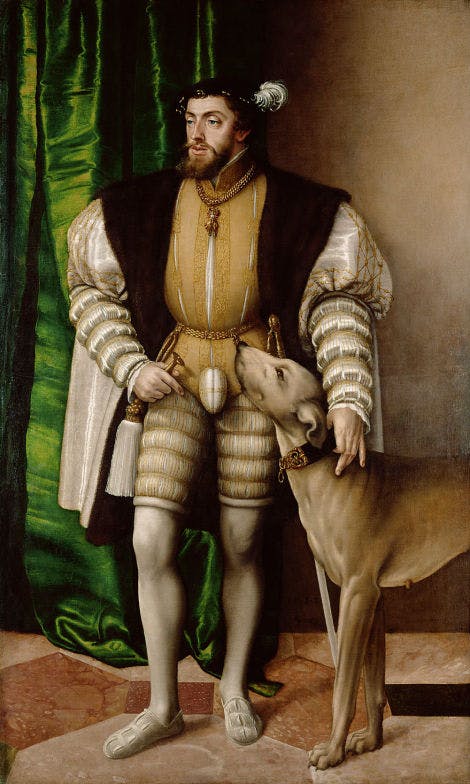
A youthful new Emperor
In 1519 Emperor Maximilian I died and elections were held to find a successor. Both François and Henry put their names forward, but the eventual winner was the young King of Spain, Charles V.
At 19 years old, Charles was much younger than both Henry and François and had inherited a vast territory much bigger than either England or France.
Charles was also Henry's nephew through marriage. As a result, Henry's wife, Katherine of Aragon, often pressured Henry to side with Charles in international disputes.
Charles' appointment as Emperor added a new dimension to the rivalry between the biggest European powers.
Image: Emperor Charles V (1500-1558) with his English Water Dog. © Kunsthistorisches Museum Vienna
The Field of Cloth of Gold confirmed
The delay caused by the imperial election meant that the meeting that would become known as the Field of Cloth of Gold was scheduled for 1520.
As soon as the meeting was agreed, Wolsey started making plans from his home at Hampton Court Palace.
Did you know?
In 1520, Wolsey was still building his new palace at Hampton Court.
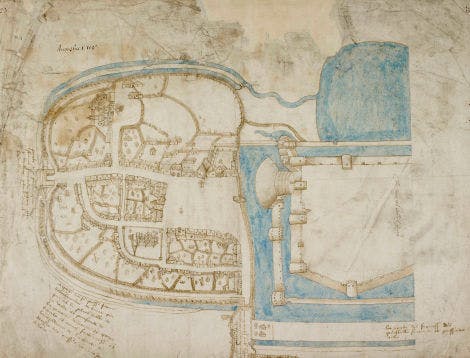
A neutral location
Wolsey agreed with his French counterpart, Guillaume Gouffier, that the meeting would take place in the summer on neutral ground between English-owned Guînes and the French town of Ardres.
Image: Plan of the town and castle of Guînes (Pas-de-Calais). © The British Library Board, Cotton MS Augustus I ii 23
Preparations
Preparations were underway for the party of the century. In just over two months, a huge English workforce had erected hundreds of tents, built a tiltyard (or tournament arena) for jousting and armed combats, and constructed a vast temporary palace for Henry, Katherine, and Wolsey in Guînes.
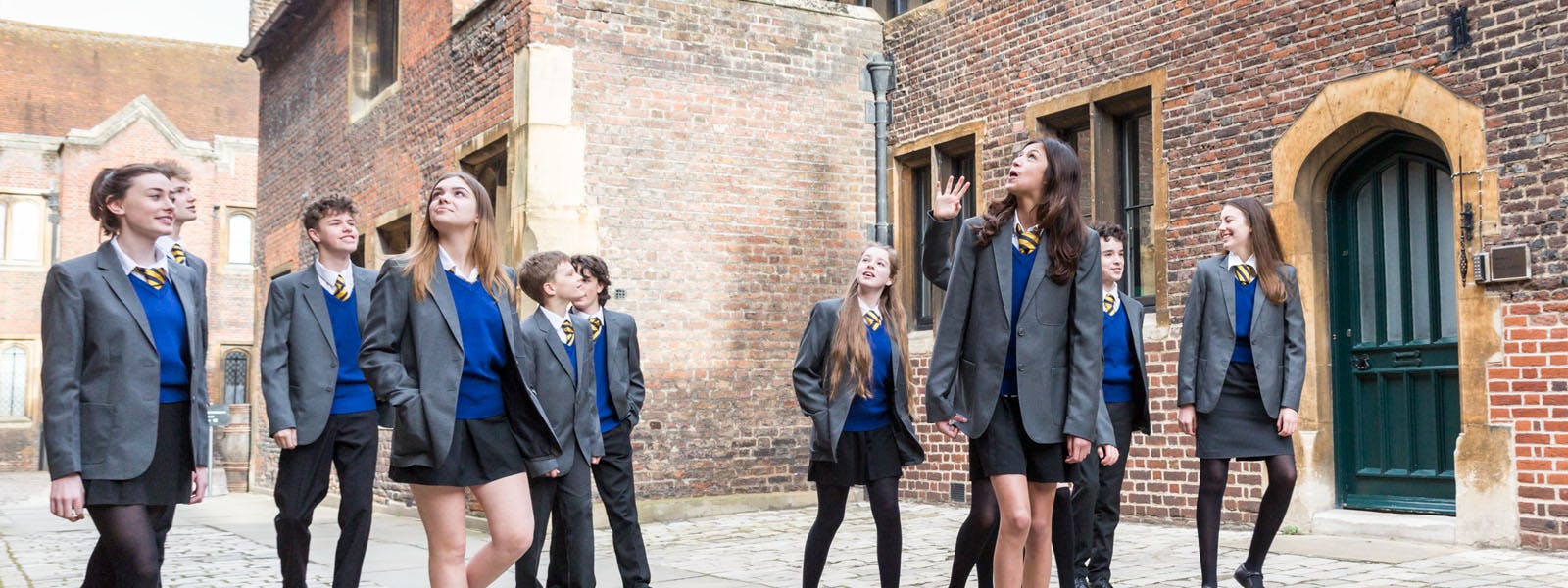
The kings' beards
To confirm their commitment to the meeting both kings promised not to shave off their beards until they met. However, Henry soon forgot the promise and removed his.
When news of his 'betrayal' reached François’ mother, Louise de Savoie confronted the English ambassador, Sir Thomas Boleyn, father of Anne Boleyn, for an explanation. Quick-witted Thomas explained that Henry had been forced to shave by Katherine of Aragon who preferred him clean-shaven.
Satisfied by this excuse, Louise replied that it did not matter too much because the kings' love for each other was 'not in their beards but in their hearts'.
Image: King Henry VIII © National Trust Images / Derrick E. Witty
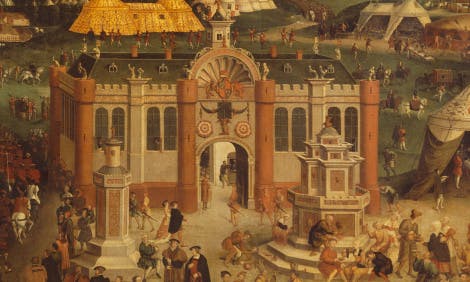
The temporary palace
The temporary palace in the English camp was built from timber covered with stretched canvas, painted to imitate stone.
The inside of the courtyard was lined with terracotta roundels like those at Hampton Court Palace and the palace windows were glazed with so much stained glass that the French called it the Crystal Palace.
Meanwhile, the French had employed an army of tentmakers to construct magnificent pavilions from the finest fabrics off-site. When they finally pitched camp at Ardres the result of their labour was spectacular. At the centre of the campsite was a 120ft tall tent covered from top to bottom in gold.
Sadly, strong winds meant that the giant tent came down before the meeting got underway.
Image: Crop of The Field of the Cloth of Gold, c.1545. Royal Collection Trust / © Her Majesty Queen Elizabeth II 2019

Henry and Katherine set off
The preparations made, the two kings, each accompanied by as many as 6,000 men and women, began their journeys to the site.
Henry and Katherine of Aragon travelled to the Channel through Kent, pausing at Otford and Leeds Castle on the way. At Canterbury, before embarking for France, they met and entertained the new Holy Roman Emperor, Charles V.
Despite the treaty of Universal Peace, tensions still surfaced. François was offended and concerned by Henry’s meeting with Charles V.
Image: Katherine of Aragon. Reproduced by kind permission of His Grace the Archbishop of Canterbury and the Church Commissioners.
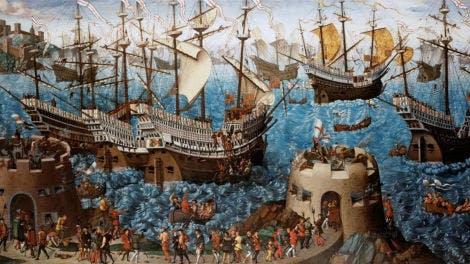
On 31 May Henry and Katherine embarked from Dover and landed in Calais a few hours later. The long planned-for moment, when the English and French kings would meet for the first time, arrived on 7 June.
Image: The Embarkation of Henry VIII at Dover c.1520-40. Royal Collection Trust / © Her Majesty Queen Elizabeth II 2019
Henry and François embrace
In the late afternoon on 7 June 1520, the two camps processed from Guînes and Ardres towards the Val d'Or (the Golden Valley) to seal a new spirit of friendship between their countries; a friendship which, they hoped, would bring an end to the wars that had made them enemies for almost 200 years.
Tensions were rife until the very last moment. As the two camps lined the valley, the French mistook the English retinue's glittering gold coats for armour. Fearing that Henry was about to double-cross them, the French paused until they were reassured it was safe.
As they approached each other, Henry and François doffed their caps and, dismounting from their horses, embraced like brothers. The English and French retinues watched as their kings walked together arm-in-arm into a golden tent to begin their meeting.
The scene was now set for 18 days of celebrations and tournaments at which Henry and François could show-off their skill, wealth, and sophistication.
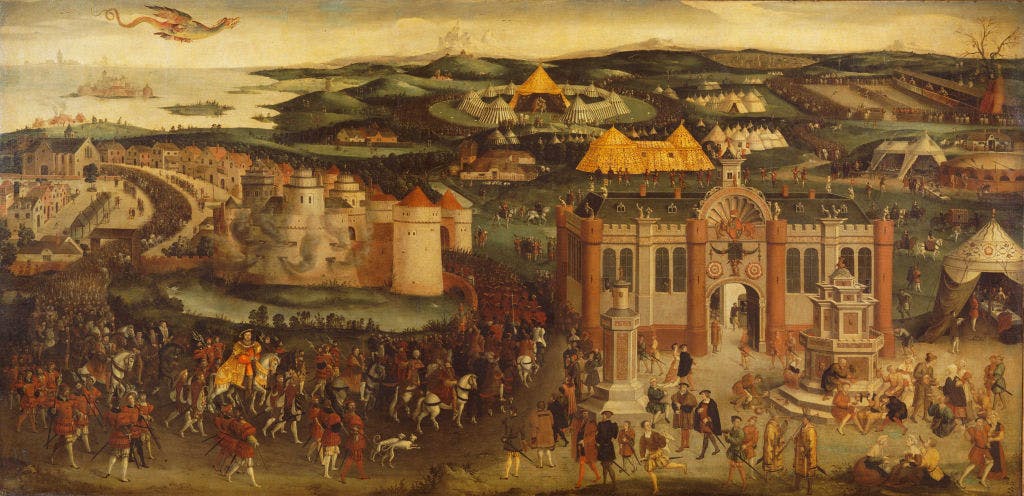
Image: The Field of the Cloth of Gold c. 1545. © Royal Collection Trust / Her Majesty Queen Elizabeth II 2019
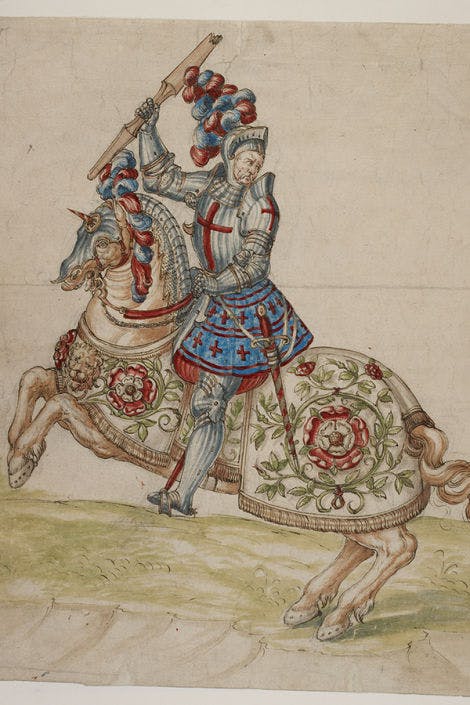
Jousting and combat
The tournament consisted of jousting, combat on horseback, and combat on foot. Both Henry and François were accomplished sportsmen but to save embarrassment and injury the two kings fought on the same side against teams of brave volunteers. Even so, François still left the field with a bloody nose.
Image: A mounted knight, possibly Henry VIII. © The British Library Board, Cotton Augustus III
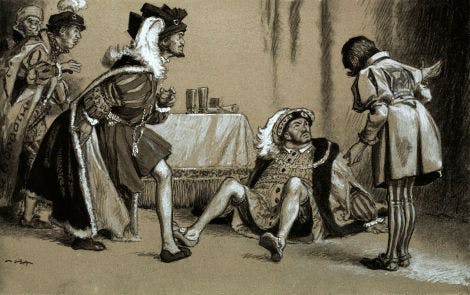
Rival kings in combat
The weather in June 1520 was changeable and on several days the tournament was rained off. To entertain themselves Henry and François turned to other sports.
French wrestlers, including two priests, challenged the English to wrestling matches. Getting into the spirit, and having had a few drinks, Henry abandoned protocol, grabbed François by the collar and challenged him to a match. It was an unwise move: François had grown up in a region of France famous for its wrestlers and he easily knocked Henry to the ground.
In retaliation Henry showed off his archery skills and challenged François to shoot his own longbow, which proved too heavy for François to draw.
Image: King Henry VIII having been thrown to the ground by king Francis I. The servant remarks: 'Your Majesties, dinner is served.' © Look and Learn / Bridgeman Images
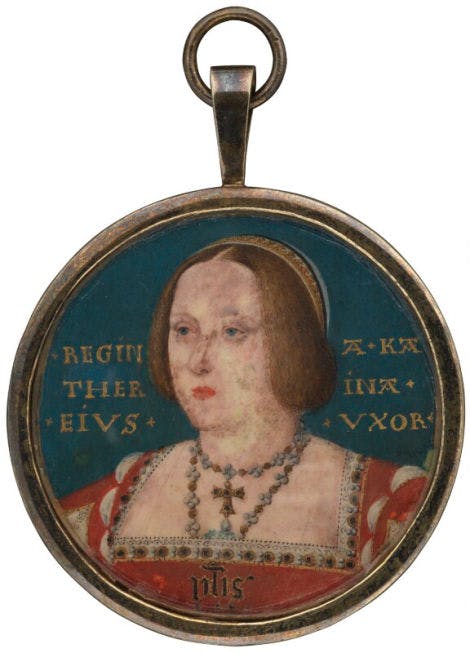
Queen Katherine and Queen Claude
Queens Katherine of Aragon and Claude of France were in positions of considerable diplomatic influence at the Field of Cloth of Gold.
Katherine was an experienced diplomat in her own right and an expert hostess. She had been married to Henry for 11 years and in most respects had excelled in her role as Queen Consort.
However, the principal role of a 16th-century queen was to secure the dynasty by giving birth to a male heir. The fact that Katherine had not delivered Henry the son that he longed for, and that a heavily-pregnant Claude had already given François two boys would have overshadowed her skills as a political mediator at the event.
Coincidentally, Anne Boleyn may also have been at the Field of Cloth of Gold in the retinue of Queen Claude. Within a decade, Henry would have abandoned Katherine in favour of Anne.
Image: Katherine of Aragon, c.1525. © National Portrait Gallery, London
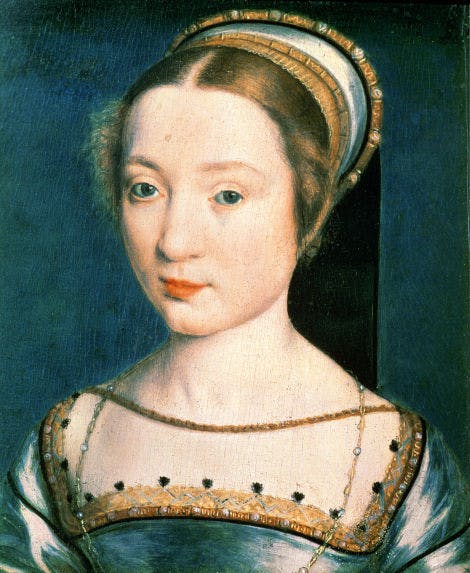
Along with Henry’s sister Mary Tudor and François's mother Louise de Savoie, Katherine and Claude hosted the feasts, dances, and theatrical entertainments that filled the evenings. Katherine entertained Francois in the English camp while Claude hosted Henry in the French camp.
Image: Queen Claude. © Bridgeman Images
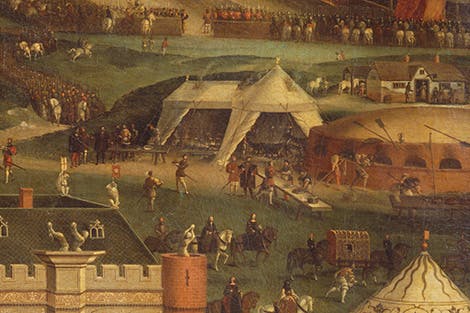
Feeding the camps
An estimated 12,000 people attended the Field of Cloth of Gold and all had to be catered for. Large kitchen tents and bread ovens were erected in the encampments and food supplies were sourced from far and wide.
English food and drink accounts reveal that they took nearly 200,000 litres of wine and 66,000 litres of beer. Some of this ran through the wine fountain that stood in front of Henry's temporary palace. English food supplies included 98,000 eggs, more than 2,000 sheep, 13 swans, and three porpoises.
Image: Crop of The Field of the Cloth of Gold, c.1545. Royal Collection Trust / © Her Majesty Queen Elizabeth II 2019
Wolsey centre stage
Saturday 23 June, the penultimate day of the event, was marked by a religious Mass staged in a temporary chapel erected on the tiltyard. Both courts came together in one place and the choirs of the Chapels Royal of England and France took turns to sing.
Presiding over the Mass was Cardinal Wolsey, the most senior churchman in attendance. He wore vestments made from cloth of gold that had been borrowed from Westminster Abbey for the occasion.

The dragon
As the Mass drew to a close the assembled crowd marvelled at a dragon flying through the sky from Ardres to Guînes. Created by the English, the dragon combined François’ salamander emblem with Henry’s Welsh Tudor dragon in a tribute to the new friendship between the two sides.
This ‘dragon’ was a kite made by the English from canvas stretched around wooden hoops. It was pulled across the sky at the end of a long rope tethered to a carriage. Eyewitnesses reported that the dragon’s eyes blazed and its mouth hissed which suggests that it might have been filled with fireworks.
Image: Crop of The Field of the Cloth of Gold, c.1545. Royal Collection Trust / © Her Majesty Queen Elizabeth II 2019
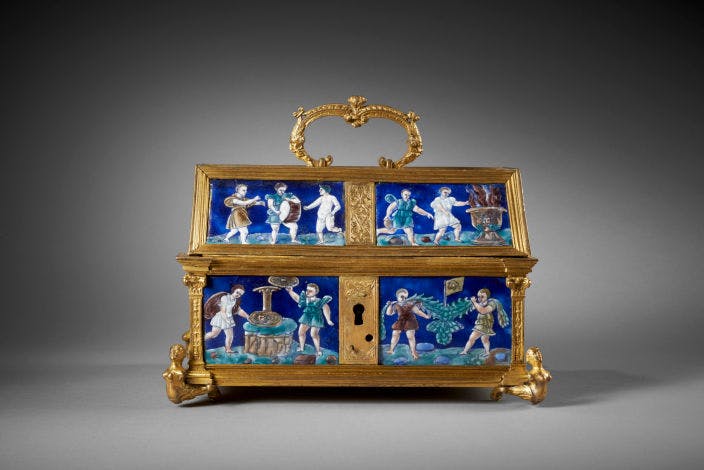
Parting gifts
The Field of Cloth of Gold ended on Sunday 24 June with another round of elaborate banquets. Henry and François exchanged expensive gifts of exquisite goldsmiths’ work and fine horses and parted on good terms.
Image: Enamel and gilt-copper casket, possibly a jewel box, mid-16th century. By tradition this gold and enamel box was a gift from Francis I to Cardinal Wolsey. It then passed to Henry VIII and from him to Anne Boleyn. © Fondation Gandur pour l’Art, Genève / Thierry Ollivier
The aftermath
On that Sunday in June 1520, it seemed that the Field of Cloth of Gold was a success. Serious diplomatic incidents had been avoided, weather aside the event had run smoothly, and both kings had ably demonstrated their power and magnificence. It looked like peace in Europe would prevail.
But the cracks in the friendship between England and France soon started to appear.
Ultimately, the treaty of Universal Peace could not last. Two weeks after the Field of Cloth of Gold, Wolsey arranged another meeting between Henry and Emperor Charles V, hoping to secure a new alliance between England, France and the Holy Roman Empire.
However, both Charles and François were suspicious of Wolsey's motives and the alliance did not come about.
By the middle of 1521 François and the Emperor were back at war after Charles attacked French territory. England was drawn into the conflict and peace in Europe was shattered.

England and France at war
In 1522 English soldiers sacked the countryside around the French town of Boulogne and in 1525 François himself was taken prisoner by Italian troops following the French defeat at the Battle of Pavia.
The rapid failure of the peace treaty and the sheer expense and extravagance of the Field of Cloth of Gold has meant it has been criticised by some as a royal vanity project and folly.
Image: The Battle of Pavia c.1530. Royal Collection Trust / © Her Majesty Queen Elizabeth II 2019.
Wolsey falls from power
Even the architect of the Field of Cloth of Gold did not last the decade. In the late 1520s, Cardinal Thomas Wolsey slipped from royal favour and from power.
His inability to secure Henry's divorce from Katherine of Aragon, who still had not given birth to a son, and facilitate his marriage to Anne Boleyn sealed his fate.
The list of charges against Wolsey that was drawn up by his enemies at the end of his life included criticism of the extraordinary amount of money he had spent on Henry’s meeting with François.
The King's wrath
Wolsey would die of natural causes before Henry could formally punish him, but the King did take Hampton Court Palace before he died.
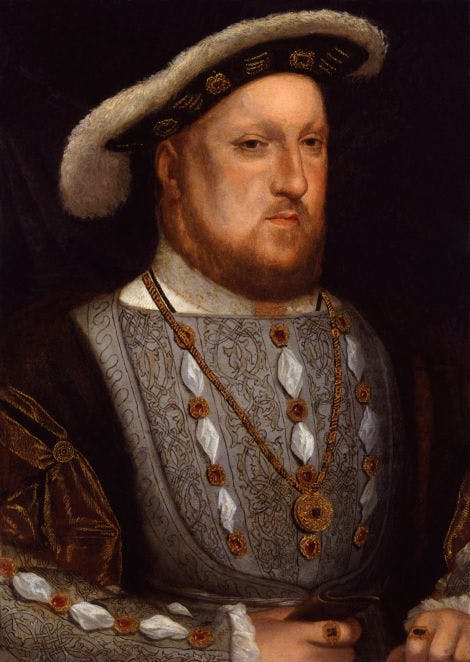
Reflecting on past glories
Despite the controversy, Henry VIII never forgot his moment of glory at the Field of Cloth of Gold. Throughout the 1530s and 1540s he tried in vain to recapture the triumphs of his youth.
Henry and François met again in Calais in 1532, but the event was more muted and had none of the spectacle and pageantry of 1520. Again, the friendship between the two kings did not last.
In 1544, an aging and infirm Henry pulled on a suit of armour for the last time and laid siege to the French town of Boulogne hoping to prove that he was still the same virile military commander who had routed the French at the Battle of the Spurs three decades earlier.
Image: King Henry VIII, after Hans Holbein the Younger, based on a work of 1536. © National Portrait Gallery
Image (below): Henry VIII by an unknown artist, based on a work of c.1542. © National Portrait Gallery, London
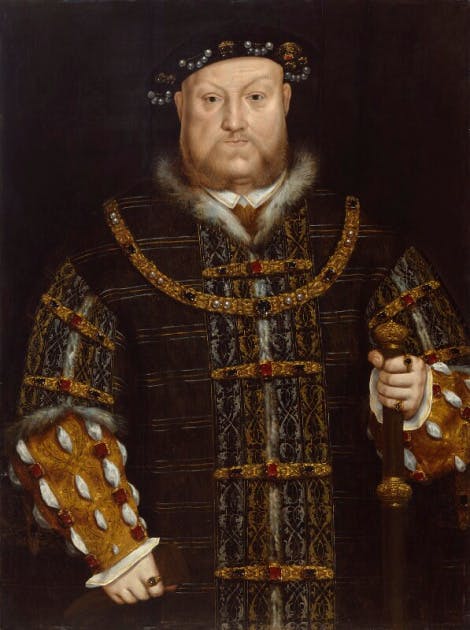
Where be all those pleasures now? They were but shadows, and like shadows they be past, like shadows they be fled away, like shadows they be now vanished from us.
John Fisher, Bishop of Rochester, commenting on the short-lived luxury of the Field of Cloth of Gold
Listen to the podcast
We all know Henry VIII was an extravagant King. However, in this talk we hear how he carried this extravagance into temporary palaces that travelled with him to events, such as the Field of Cloth of Gold.
These temporary structures really help to contextualise the importance of show and display for a renaissance king. In part one we’ll hear from Aldon Gregory on timber temporary structures.
More episodesBROWSE MORE HISTORY AND STORIES
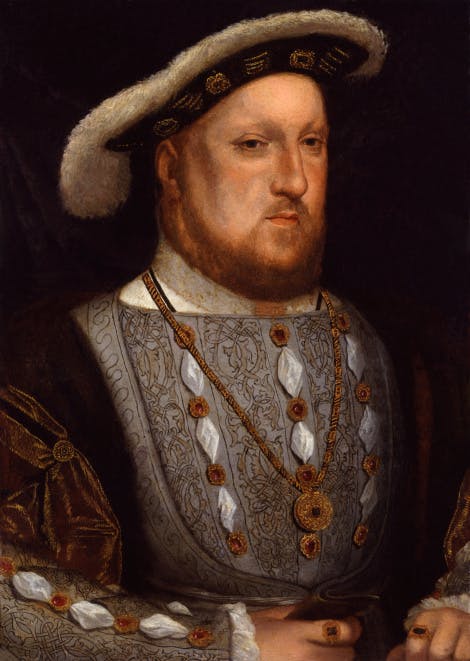
Henry VIII, Terrible Tudor?
Who was the real Henry VIII?

Katherine of Aragon
Katherine of Aragon was the first wife of Henry VIII. In her eyes, she was his only Queen.
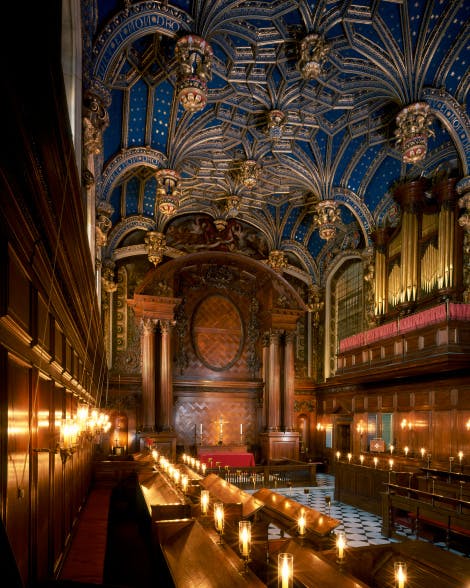
The story of Hampton Court Palace
Home of Henry VIII and the Tudor dynasty
EXPLORE WHAT'S ON

- Events
- Families
Artisan Fayre
Discover artisan products and unleash your creativity at Hampton Court Palace this May.
- 17 - 19 May 2024
- 10:00-17:30
- Hampton Court Palace
- Included in palace admission (members go free)

- Families
- Events
Henry VIII's Joust
Experience the thrill of the Tudor joust as the country's greatest knights battling it out at Hampton Court Palace.
- 13-14 and 20-21 July 2024
- Hampton Court Palace
- Included in palace admission (members go free)

- Events
- Families
Hampton Court Palace Food Festival
Join us for a summer celebration of food and drink in the iconic East Front Gardens at Hampton Court Palace.
- 24 - 26 August 2024
- 10:00 - 18:00
- Hampton Court Palace
- Included in palace admission (members go free)
Shop online
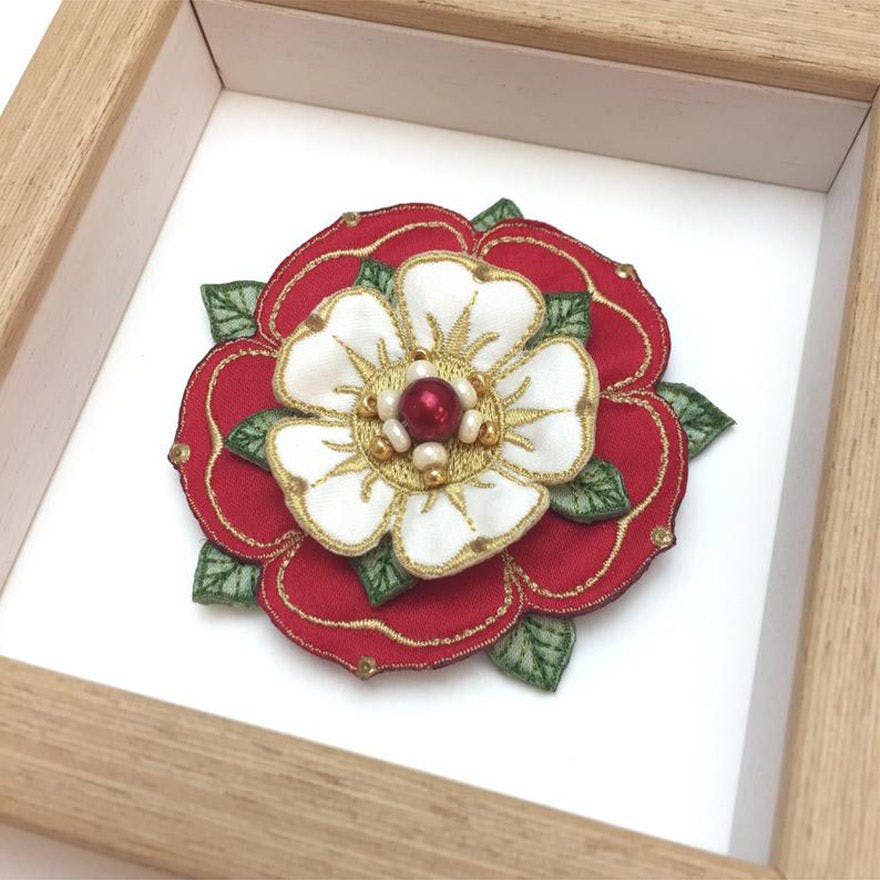
Shop Tudor gifts
Browse through our Tudor Collection to find a whole range of products based on the Tudors.
From £3.00
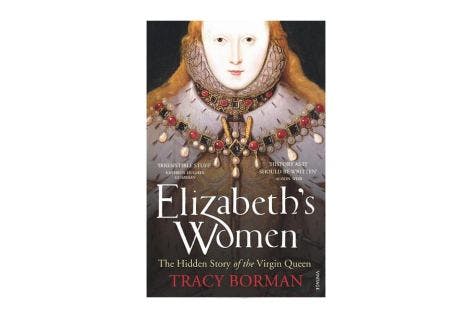
Elizabeth's Women by Tracy Borman
Discover the world of Elizabeth I with this insightful look at Elizabeth's relationship with woman and how they helped to shape her into a remarkable monarch. This thrilling book explores the lesser known side of Elizabeth I who is often portrayed as a ruthless 'man's woman'.
£16.99
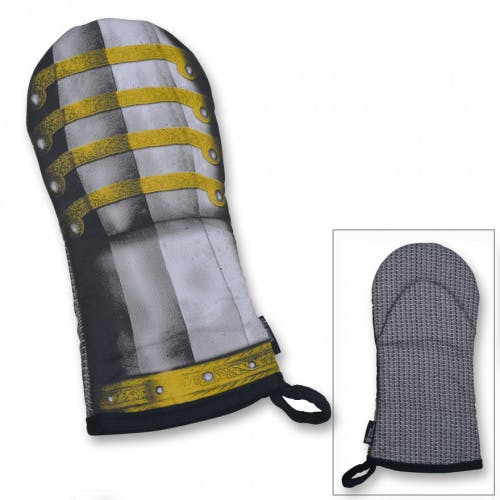
Henry VIII gauntlet armour oven glove
This fun oven glove has been inspired by a suit of armour made for Henry VIII in 1540, which is on display at the Tower of London.
£18.00


